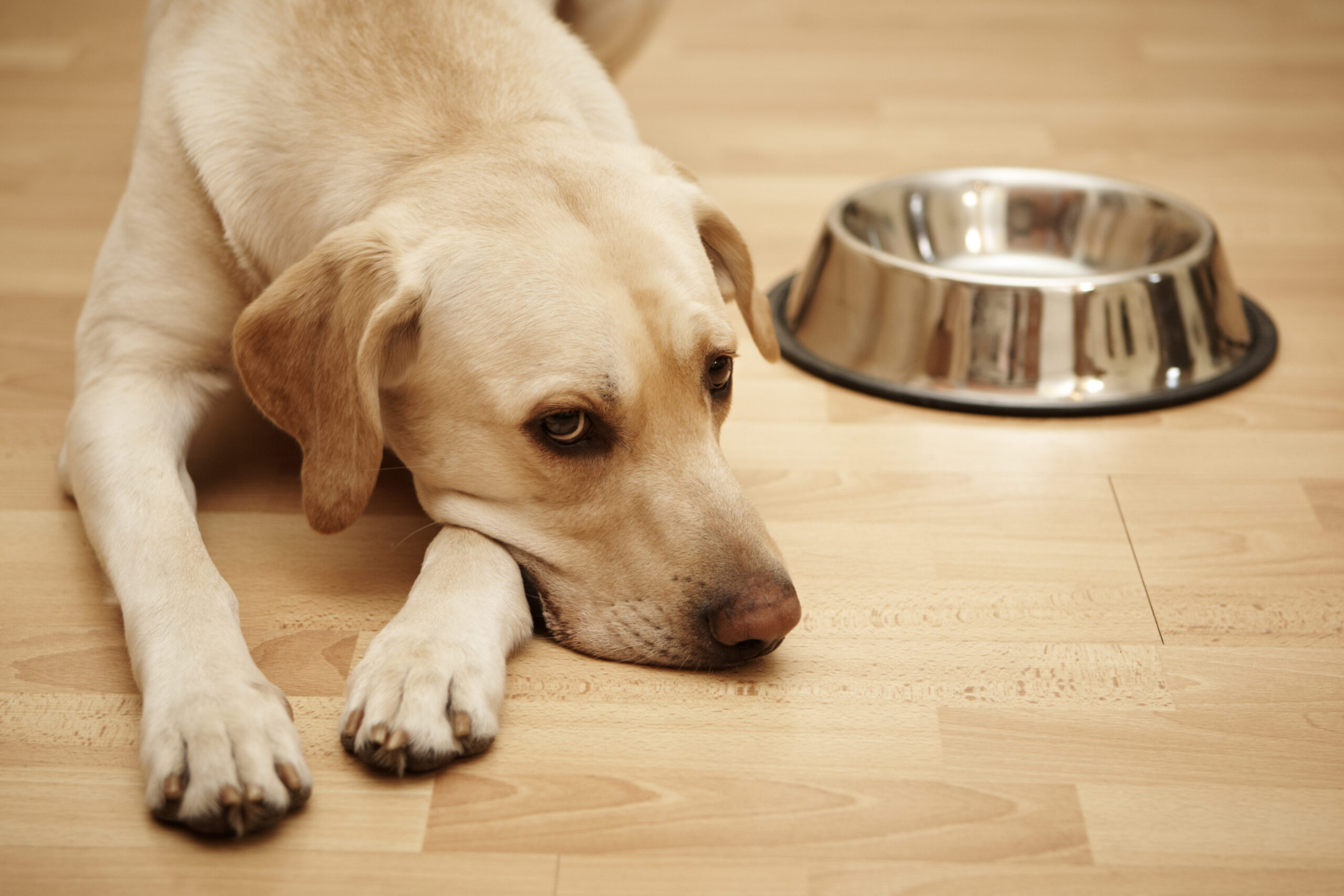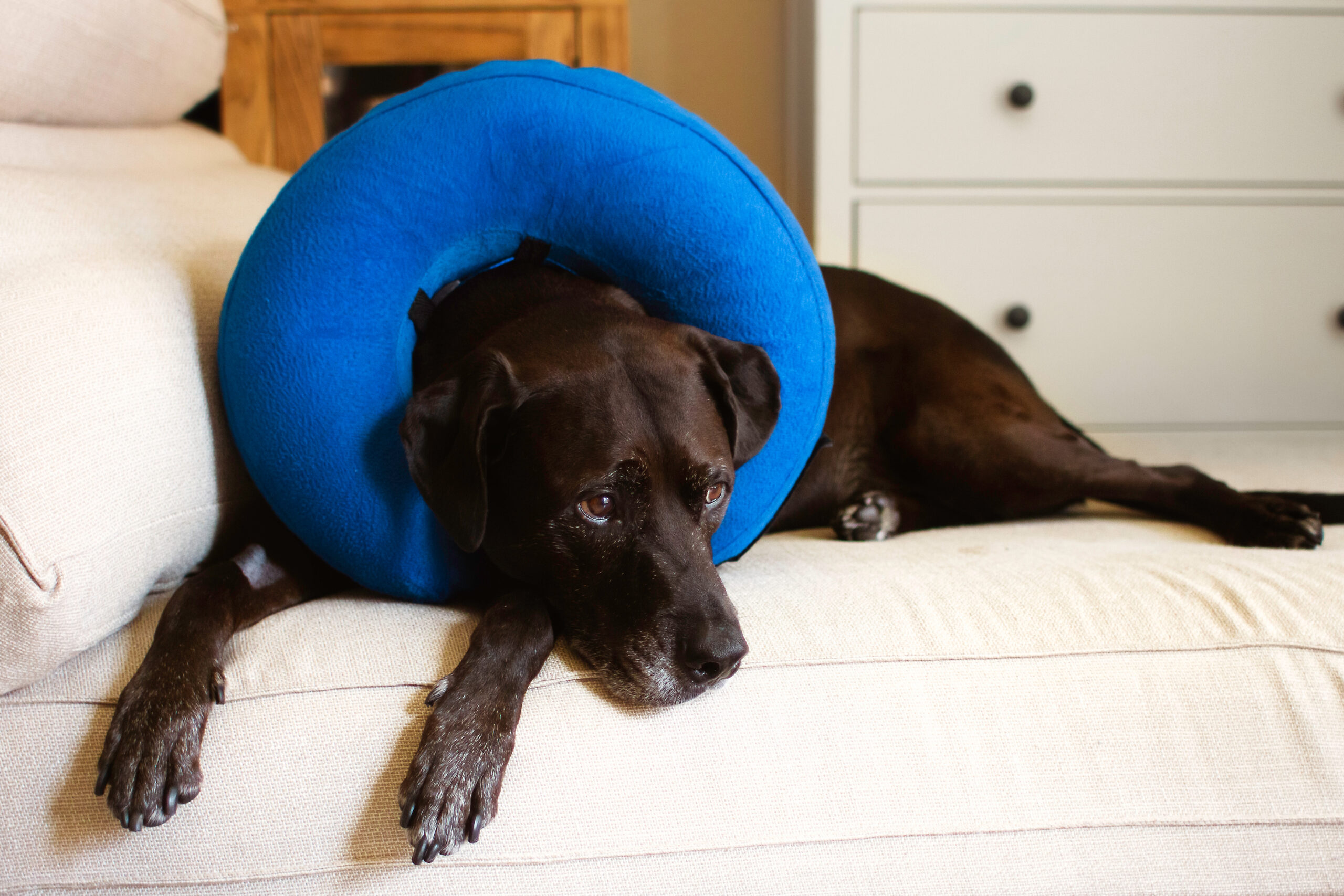Hearing that your dog needs surgery can be upsetting for any pet parent, even if it’s a standard procedure—according to a OnePoint survey conducted for Lemonade, 36% of dog owners have had their canine undergo in the last 12 months.
But surgery can also be bad news for your wallet, as veterinary procedures can be shockingly expensive.
We’ll break down the costs of common canine surgical procedures, and how pet insurance for your dog could help take the bite out of hefty vet bills. We’ll also tell you what you can expect before, during, and after your pup’s procedure, so you can focus on your pup’s road to recovery.
We might not be able to hold your hand at the animal hospital, but we’re here to reassure you with all the information you need to get ready for surgery and care for your fur baby after it’s over.
- While individual costs vary depending on the specific procedure your pup needs, expect to pay anywhere from $500–$7,000. Also consider the additional costs of x-rays, tests, examinations, and an overnight vet stay.
- A base Lemonade Pet policy will help cover the costs of the diagnostics, treatments (including surgery!), and medications related to a covered accident or illness.
- Though rare, your dog may experience infection or negative affects from anesthesia as a result of surgery.
- For the first few days after surgery, monitor and control your dog’s eating, drinking, and overall activity levels.
The costs of dog surgery
It’s hard to say in advance exactly what your dog’s surgery will cost, because that depends on how complicated the procedure is, what level of care you’re paying for, where you live, the age and health of your dog, and other factors. Spaying, for example, can cost anywhere from $200 to 400—and all the way up to $2,000 for a procedure with all the bells and whistles.
To put things in perspective, we turned to Dr. Stephanie Liff, Lemonade’s veterinary expert to give us a list of the most common dog surgeries (and how much they cost).
| Name of procedure | What it is | How much it costs |
|---|---|---|
| Cystotomy | Removal of bladder stones | $1,500–$3,500 |
| ACL repair | Fixing a torn knee ligament | $4,000–$6,000 |
| Foreign body with GI obstruction | Removing an object stuck in the intestines | $3,000–$7,000 |
| Mass removals | Cutting away cysts or benign tumors | $500–$5,000* |
| Splenectomy | Removal of the spleen | $3,500–$5,000 |
*cost varies (widely) depending on if the procedure requires anesthesia
Keep in mind that it’s not just the cost of the surgery itself—you’ll have to pay for tests and checkups to prep your pet for surgery, as well as overnight hospitalization.
Diagnostic tests can cost from $75–$250 for X-rays and $25–$100 for urine tests, up to $300–$600 for an ultrasound, and $1,500–$2,500 for an MRI. A stay in the hospital can cost as much as $600–$1,700 per night!
Luckily, pet insurance coverage can be an economical way to recoup many expenses you might encounter if your dog needs surgery. A Lemonade Pet Accident & Illness policy can help pay for diagnostics, procedures (including surgery), and medication in the event of an accident or illness.
Common reasons why your dog needs surgery
There are two main kinds of surgical procedures for dogs: elective and urgent.
Elective procedures can usually be scheduled when it’s convenient for you. These can include:
- Spaying or neutering a young dog
- Non-urgent dental extractions
- Removing benign growths or tumors
- Hip replacement
Urgent procedures, on the other hand, may need to be done immediately because of life-threatening issues. (Sometimes, even urgent surgery can wait a day or two while you make preparations for home care after the surgery.) Urgent procedures can include those that deal with:
- Skin lacerations or abscesses
- An obstruction within the intestines
- Internal bleeding
- Tibial Plateau Leveling Osteotomy (TPLO) or another procedure to fix a torn posterior cruciate ligament or ACL rupture
- Fractures and broken bones
- Malignant skin tumors
- Bladder stones/urethral blockages
- Spleen cancer
Your pet might need surgery because of a chronic pet health condition that you’ve known about for a while, or something could have happened unexpectedly, like an accident.
Some common pet diseases like heartworm can require surgery if they aren’t treated quickly.
Understanding the risks of dog surgery
Every pet parent feels nervous about pet surgery, but rest assured: Modern veterinary medicine is very advanced. Today’s veterinary hospitals are well-equipped with a full surgical suite, comfortable doggie wards, and experienced veterinary surgeons. But, as with any medical procedure, there are some risks.
According to Dr. Liff, the most common surgical side effects for dogs are infections and some unpleasant reactions to anesthesia.
Infection
Infection is the most obvious and common risk from surgery, and can happen even if the surgery was performed in a sterile environment and your dog was given antibiotics. If your pup’s incision site looks inflamed, red, or filled with pus, call your vet to figure out next steps to get the infection cleared up.
Anesthesia side effects
There’s also the risk of putting your pup under anesthesia. The most common and benign side effect of anesthesia is a post-op cough, which can happen as a result of intubation. Anesthesia can also cause blood pressure fluctuations or aspiration pneumonia, both of which can be treated during or after surgery.
Keep in mind that your vet will help you weigh the impact of surgery—with the quality-of-life benefits it might bring—against any risks.
Getting ready for surgery
Generally, dogs should fast from 10 pm or midnight the night before the procedure. You can give your dog water on the morning of the surgery, up until you drop them off.

Once you arrive at the pet hospital, you can expect the veterinary technician to lightly sedate your dog so they can run some pre-surgery blood work, do an EKG (electrocardiogram) to check their heart, and check their liver and kidneys are healthy enough to withstand the effects of anesthesia.
While your dog is sedated, they’ll insert an IV catheter so they can administer fluids during surgery, and carry out another physical exam to check there aren’t any other health concerns or potential complications.
During the surgery
It’s up to you if you want to stay during the pre-surgery prep and the surgery itself, or if you’d prefer to drop your dog off and come back when they’re due to wake up from general anesthesia.
The veterinary team might give your dog some pain medication before the procedure to limit discomfort. During the procedure, they’ll monitor all your dog’s vital signs like their breathing, heart rate, blood pressure, body temperature, and blood oxygenation rate.
What about hospitalization?
After the veterinary surgeon completes the procedure and closes the incision site, the team will continue monitoring your dog until they wake up and recover enough to be sent home.
After most elective procedures, most dogs can go home on the same day. For urgent procedures, it’s going to depend on your pet’s health, status, pain levels, and also how confident you feel about being able to manage their post-operative care.
Caring for your dog after surgery
Just like humans, most dogs want to be in a quiet and calm environment while they’re recovering from surgery. Make sure your dog has somewhere peaceful to rest without being disturbed, and arrange to have someone at home to keep an eye on them and handle their pain management for at least the first 24 hours.
If your dog develops any of these symptoms, you should get in touch with the hospital and/or your vet straight away:
- Loss of appetite for more than 2 days
- Refusing to drink for more than 1 day
- Weakness
- Depression
- Vomiting
- Coughing
- Difficulty breathing
- Nasal discharge
- Diarrhea
What to expect after general anesthetic
Don’t be surprised if your fur baby is groggy and disoriented after receiving a general anesthetic. They might sleep longer or deeper, seem dull and listless, and might even need help balancing during bathroom breaks or while eating.
All of that is normal for as long as 24 hours after they wake up—but if it carries on beyond that time, you should contact your vet.
It’s also common for dogs not to have a bowel movement for 24 to 36 hours after anesthesia.
Exercise and activity
For the first 24 hours, your dog should only go outside for bathroom breaks. Leash them so that they don’t run or jump around while they’re outside.
Limit indoor activities too, for at least 12 hours, or according to your vet’s specific instructions.
Follow-up appointments
Most soft tissue surgery involves soluble sutures that disappear on their own, but if not, you’ll need to schedule an appointment to remove them.
Your vet will also arrange a follow-up appointment to check that the wound is healing properly and your dog is recovering as expected.
Caring for the incision
It’s not easy if you’re squeamish, but you might need to change your dog’s bandages and clean their incision site. Your vet will give you detailed instructions about cleaning sutures, but in general you should keep the site dry—so no long walks in the rain, and no bathing or swimming for about 10 days after surgery.
Most dogs are sent home with an Elizabethan collar—the so-called “cone of shame”—to stop them licking the incision site, and you should also watch that area for signs of infection, like redness and swelling. We’re fond of the soft, colorful versions ourselves.

Food and water
It’s common for dogs to bolt down too much food and drink once they get home after surgery, so limit water for the first hour, and then give them small amounts of food and drink for the first 8 hours.
Although you probably want to pamper your fur baby, it’s best to save the treats for another time. If the surgery was GI-related, your vet might ask you to only give bland food for the first day or two.
Comforting your dog during recovery time
Everyone needs a little comfort when they’re recovering from surgery, and your dog is no exception. Some pet parents find that CBD dog treats can help calm their pet down after their difficult experience. But it’s best to check with your vet before you use them.
Thundershirts are another way to help reassure and comfort your dog while they are recovering. They’re weighted dog vests that swaddle your pet and help them feel secure.
Just like humans, your dog could get bored during their recovery time, especially if they aren’t allowed to play outdoors or with their pup pals for a few days. Dog toys like the Trixie activity board or Nina Ottosen puzzle boards keep your dog’s mind stimulated so they don’t get too antsy.
Pet surgery doesn’t have to be so financially painful
If you’re feeling a bit overwhelmed by the costs of your pup going under the knife, we understand. Keeping your fur fam healthy can be expensive. We never want the fear of maxing out your credit card to be the reason you dread a vet visit (or forego an important procedure).
Pet health insurance can be an economical way to recoup many expenses you might encounter if your dog needs surgery. A base Lemonade Pet policy can help pay for diagnostics, procedures (including surgery), and medication in the event of an accident or illness.
Click below to get started—it only takes a few minutes.




